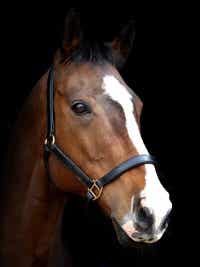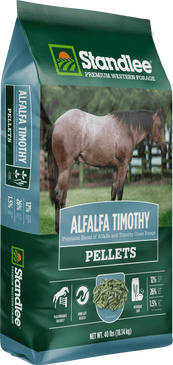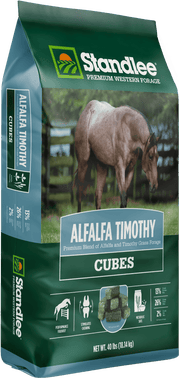FORAGE AND GASTRIC ULCERS
Dr. Tania Cubitt and Dr. Stephen Duren, Performance Horse Nutrition and Standlee Premium Products Nutritional Consultants

The horse has evolved as a grazing animal; forage plays a pivotal role in equine health. Horse are non-ruminant herbivores also known as “hindgut fermenters.” Their digestive tract is made up of a simple stomach, small intestine and large intestine. The natural feeding habit of the horse is to eat small amounts of roughages often. Domestication has brought a change to this. Modern management practices incorporate stabling, increased grain-based concentrate consumption, meal feeding and limited access to pasture. This has led to a myriad of problems by undermining the horses’ digestive capabilities. One of the most common disorders in horses today is gastric ulcers.
Equine gastric ulcers are a significant problem in certain equine populations: an estimated 58% of show horses and 93% or racehorses are affected. Foals are also at risk with an estimated 25-50% developing lesions. Horses that are typically fed diets high in soluble carbohydrates which produce volatile fatty acids when broken down in the stomach, can damage the protective barriers of the non-glandular areas allowing acid to irritate and ulcerate the tissue. Another issue with the current management of horses is meal feeding accompanied by long periods of fasting. This enables the buildup of acid in the stomach which can splash up to the non-glandular regions and cause ulceration.
Given the prevalence of gastric ulceration in horses today, researchers have investigated several nutritional aspects of the disorder. A study looking at feed type on gastric ulcer formation showed an increased risk of gastric ulcers in young growing horses consuming high grain diets as compared to a forage diet. After 4 weeks on the high grain diet, the ulcer scores for the horses had increased by about 30%, and after 8 weeks, the scores had increased about 3-fold. Thus, a diet high in roughage appears to promote better digestive health as reflected by the gastric ulcer scores, whereas high grain diets caused greater gastric irritation.1
Forage contains all of the essential nutrients required by horses: water, energy, protein, vitamins and minerals. Grain concentrates and supplements should only be fed to compliment the forage being offered. If high quality forage is being fed, most horses only require a low intake vitamin and mineral pellet (ration balancer pellet). Feeding Standlee Premium Products (bagged and baled forage) will boost the quality, consistency and nutrient profile of marginal quality hay. This will help horses satisfy their nutrient requirements and decrease the amount of grain that must be fed, therefore decrease the horses risk for developing gastric ulcers.
Other research groups have focused on the type of forage fed to horses and its effect of ulcer formation and severity. Providing good-quality alfalfa or alfalfa-mix forage can help buffer stomach contents and reduce gastric acidity. Alfalfa forage has been shown to buffer gastric contents and decrease gastric ulcer severity in horses housed in stalls and exercising. 2,3
Recommended Standlee Products
Also, pasture turnout when possible can help reduce stress and prevent gastric ulcers. Standlee Premium Products provides premium, high-quality alfalfa and alfalfa/grass mixed forage that can be fed to all classes of horses. This forage is grown in the Western United States and it is without equal, with respect to quality and nutrient profile. They provide regular baled forage as well as pelleted and cubed forms of these forages.





